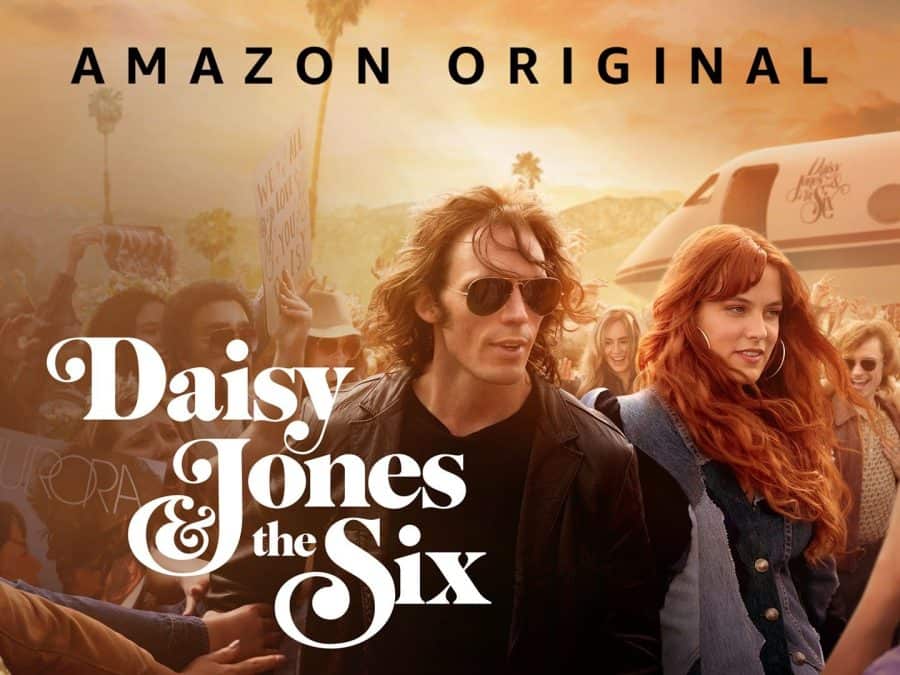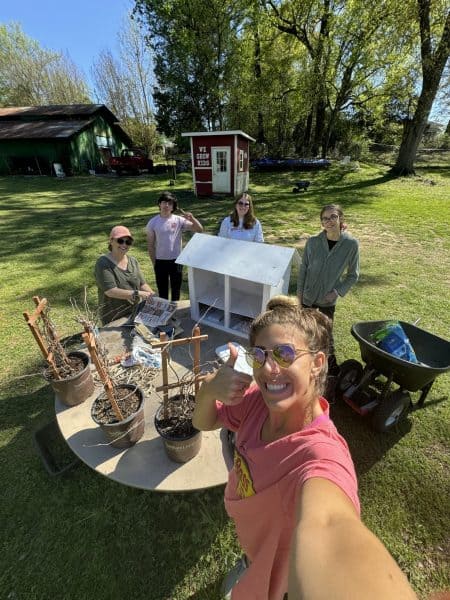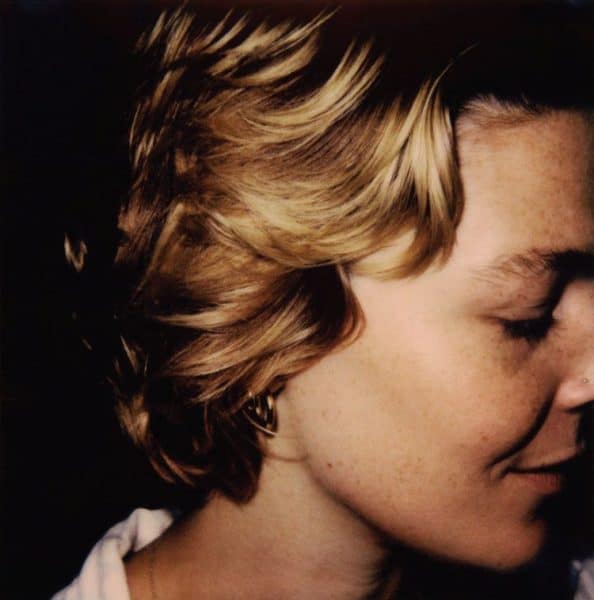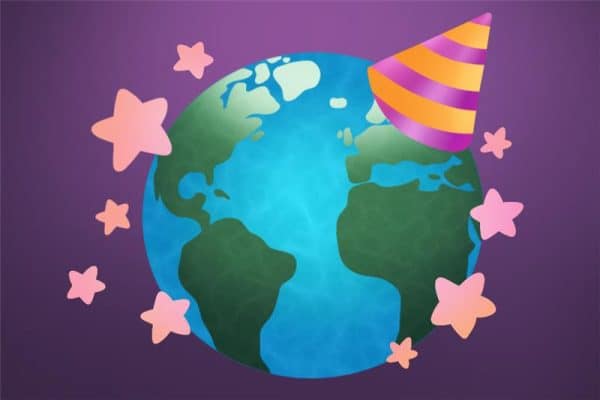Culture Pick: How “Daisy Jones and the Six” became the most authentic ‘fake’ band
March 29, 2023
The first thing you might read when you pick up Taylor Jenkin Reid’s book “Daisy Jones and the Six” is that the story is entirely a work of fiction and any resemblance to real life people is merely a coincidence. It is something that you will go back continuously to re-read throughout the book, to convince yourself that the characters, the music and the story is not real. That same sentiment translated supremely into the Amazon Prime limited series, which premiered on March 3. Over the course of four weeks, 10 episodes came out with the series finale dropping on March 24.
“Daisy Jones and the Six” tells the story of a rock band’s rise and fall from stardom in the 1970s, from the creation of the group and the recording of their seminal album to the wreckage that led to their untimely breakup, the reality of it all is that it is so seemingly real.
The lengths that were ran by the show in order to seamlessly put together the iconic ensemble were impressive and are noticeably shown on the cast list, particularly with Riley Keough, whose portrayal of Daisy Jones captivated audiences.
“I just knew I was going to be Daisy,” Keough told Variety. “I really felt like Daisy was her own person.”
Despite her famous rock ’n’ roll lineage, being the granddaughter of Elvis Presley and daughter of Lisa Marie Presley, Keough had never sung professionally before. It sounds unbelievable, especially after hearing her larger-than-life vocals on the show.
Both Keough and her leading man, Sam Claflin, were nervous about singing for the show. However, after hearing the alternative of having voice doubles sing while they merely pretended, the two quickly agreed to begin lessons.
“I was like, ‘What does that even mean?’” Claflin said. “I think that was the kick in the ass that I needed.”
Claflin, who shines as Billy Dunne, the front man of The Six, might have been new to being a recording artist, he was not new to scripts such as “Daisy Jones and the Six.” Claflin has taken multiple walks around the book-to-screen adaptation block, starring in “Love, Rosie,” “Me Before You” and, most recognizably as Finnick Odair in the blockbuster film franchise, “The Hunger Games.”
“I don’t keep up to date with what’s on the bestsellers list,” Claflin said in a Q&A on his Instagram. “But if I am involved in an adaptation of a specific novel, I will always read it, and usually more than once.”
Perhaps the most notable aspect of bringing Reid’s story to life was the recording of “Aurora,” the 11-track album that skyrockets the band to stardom. Produced by Atlantic Records as a companion album for the show, “Aurora” comes stacked with writing credits from Phoebe Bridgers and Marcus Mumford and was recorded by the cast of the show, including Keough and Claflin singing lead vocals. The album came out with the show, with lead singles “Regret Me” and “Look At Us Now (Honeycomb)” paving the way for the 1970s styled album.
“Part of how we went in and originally presented our vision for this was that we were going to treat Daisy Jones as a real band,” said Kevin Weaver, the president of Atlantic Records’ West Coast region.
Treating the band as if they were a new signing to the label was a game changer for the series. “Aurora” debuted as No. 1 on iTunes and became the first band developed from a scripted series to reach No. 1 on Billboard’s Emerging Artists chart.
While it is a work of fiction, fans can detect parallels to the lore of the renowned band, Fleetwood Mac. Billy and Daisy’s tortured romance has been compared to that of Stevie Nicks and Lindsey Buckingham.
In the show, Billy is married to his wife, Camila, but cannot help but fall in love with Daisy. Billy Dunne’s love life easily becomes a major focal point, tearing his heart in half and gifting both Camila and Daisy a side. While Camila has been there with Billy since the beginning and brings out the very best of him, Daisy understands the worst and allows him to feel his most vulnerable emotions. Everyone has their own opinions on who the rockstar should choose, including the rockstar himself.
“I’m Team Billy,” Claflin said via Instagram. “He tries his best to do the ‘right’ thing, but in truth, he loves them both for different reasons. They each bring out a different side to him … I will never pick a side.”
Keogh and Claflin have immediate chemistry together, from their first scene together in Episode 3, to the heart shattering final show at Chicago Stadium in Episode 10. It is passionate, all while capturing the painful essence of falling in love with someone who does not belong to you. Daisy and Billy were practically thrown together, and that notion does not escape the script.
In perhaps the most moving scene between the two leads comes a fan-favorite quote that describes the relationship between them flawlessly. However, while the book gives it all to Billy, the series alternates each line between the two.
“Everything that made Daisy burn, made me burn,” Billy says.
“Everything Billy loved about the world, I loved about the world,” Daisy says.
This recount is tear-jerking; showing the once twin flames reminisce on a what-could-have-been love, 20 years later.
Despite the tension between the two stars and the inevitable breakup that leaves the band in shambles, there were brief, yet peaceful, moments of comradery laced in each episode. In Episode 4, “I Saw the Light,” Camila Dunne hosts a party at the new house her husband bought for their family and decides to invite Daisy to try to ease the tension between her and Billy. The power goes out, and that is when the sparks go off. Each member of the band is present, harmonizing and playing along to The Faces’ song “Oh La La.” It is one of the rare moments of peace between Daisy and Billy and highlights the friendship and genuine love for music that is at The Six’s core.
The Amazon adaptation finds itself among some of the most praised page-to-screen adaptations of its time, which is no small feat, considering a few of the glaring differences between the script and the book. Author Taylor Jenkins Reid acknowledged the changes, describing the television series as a “new version” of her original piece of work.
“Here’s a new version of this story,” Reid, told Variety magazine. “Here are new versions of this song. Here’s a new way to enjoy this. Hopefully, my readers will feel like they’re finding the things that they loved about it, but also that it is something different. I like that it’s different. I don’t feel the need to compare them quite the same way as I have seen some people do.”
Among those differences come one less member of the band, a plotline for Daisy’s best friend, Simone, and a contrasting time lapse between the events of the band and the conducted interviews. However, some of the changes elevate the characters and move along the story with more emotion than can be seen in the book, such as Billy and Daisy’s first kiss, which occurs in Episode 5. It electrifies audiences and gives the energy needed to continue the drama between the leads for the remainder of the series.
“Daisy Jones and the Six” is plot twists, heart-wrenching love affairs, and kick-ass music. It dives into the mundane lives of a band trying to make it and creates a whirlwind of elation around them. It transfixes audiences with the timeless 1970s aura. In between the lust and the longing came a vintage love story, and the tale as old as time: how a bunch of nobodies became the biggest band the world has ever seen.











